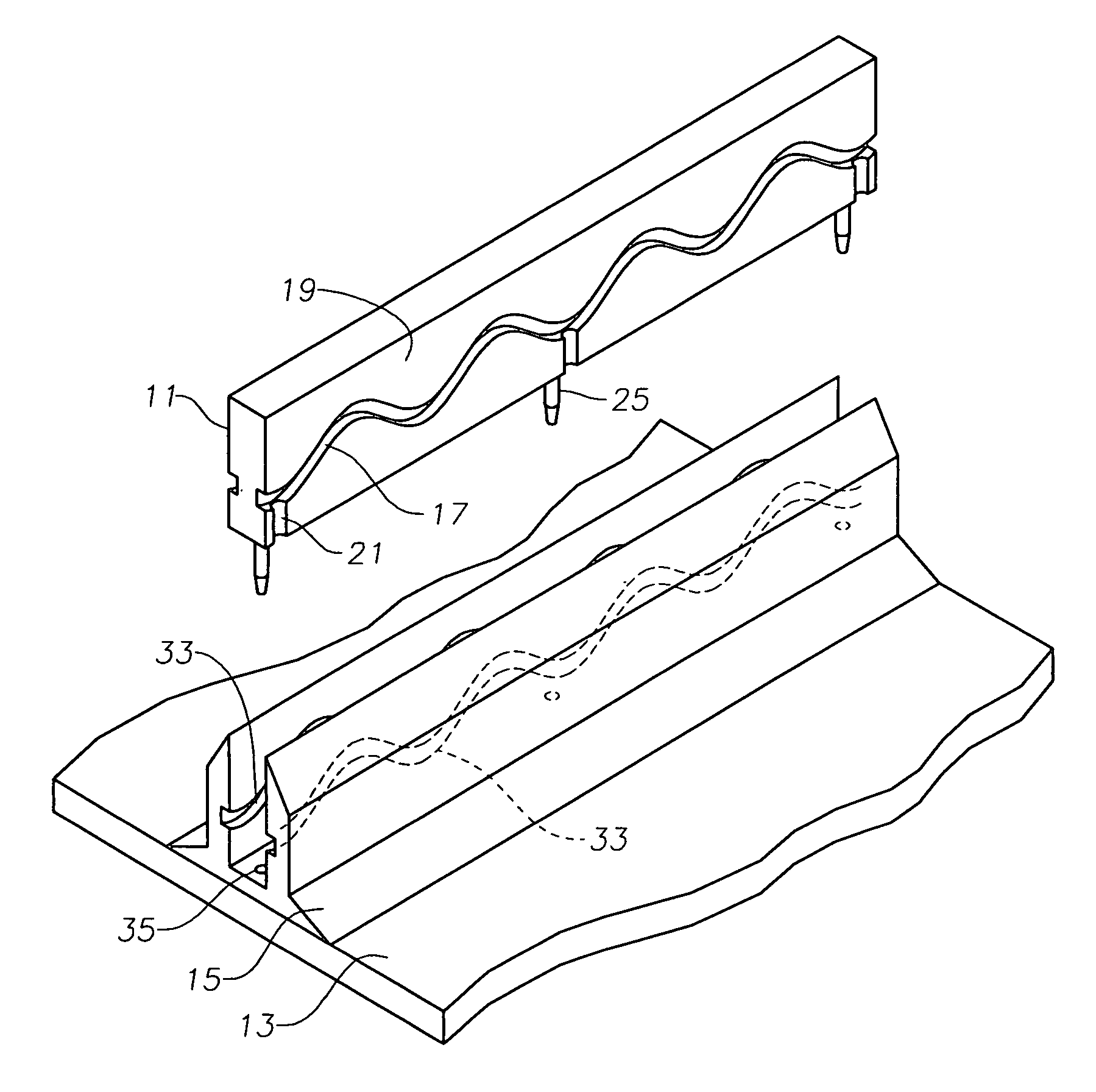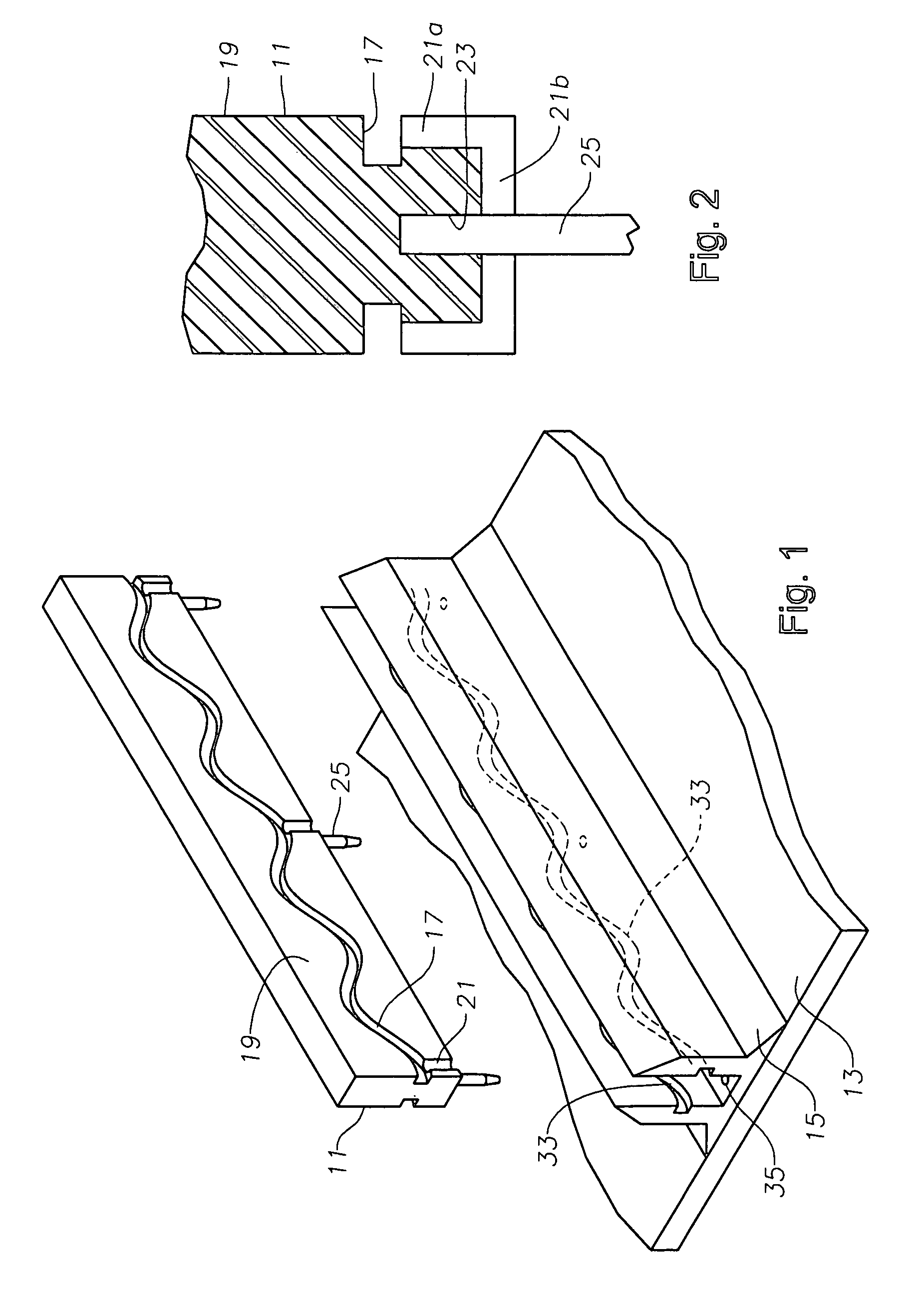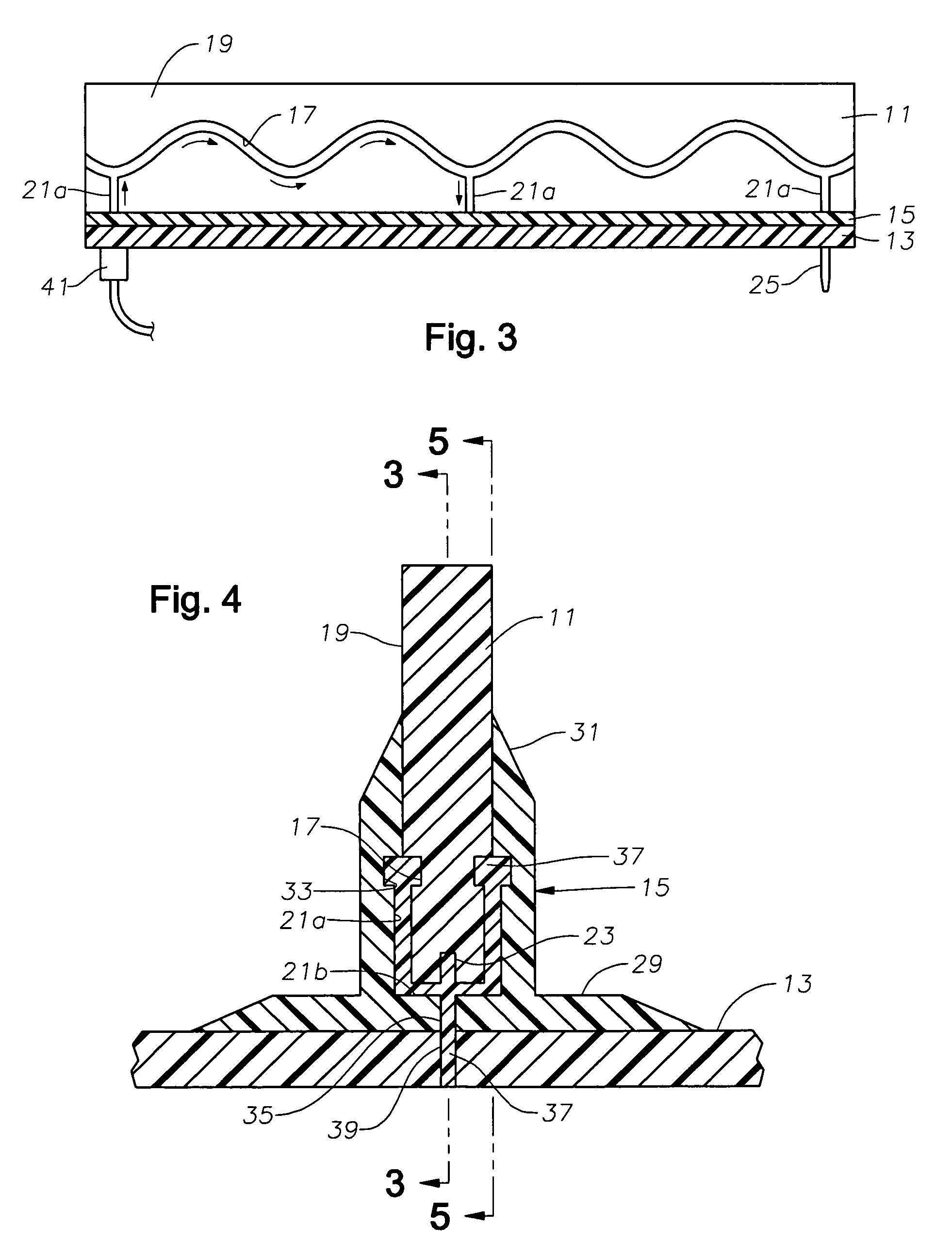Failsafe injected adhesive joint
a technology of injected adhesives and adhesive joints, which is applied in the direction of machines/engines, other domestic objects, mechanical equipment, etc., can solve the problems of difficult certification of the use of adhesive bonds in aircraft and other primary structures, and considerable effort in both manufacturing and inspection
- Summary
- Abstract
- Description
- Claims
- Application Information
AI Technical Summary
Benefits of technology
Problems solved by technology
Method used
Image
Examples
Embodiment Construction
[0019]Referring to FIG. 1, a structural member 11 is shown being joined to a second member 13, which typically comprises the skin of an aircraft. In one example, an interface member 15 provides an interface to bond structural member 11 with skin 13. In one embodiment, interface member 15 comprises a woven preform, however other members could alternately be used.
[0020]Structural member 11 may comprise a variety of aircraft frame components such as a spar or beam of a wing or fuselage, a bulkhead, or a bracket. The word “structural” is used for convenience and not in a limiting manner. In this embodiment, both structural member 11 and skin 13 are formed of laminated resin composite material. That is, each is formed of multiple layers of fiber, such as carbon, laid up one upon the other. Some of the layers may be unidirectional and other layers woven or otherwise configured. Alternatively, structural member 11 could be a metal. Preferably, structural member 11 and skin 13 are cured pri...
PUM
| Property | Measurement | Unit |
|---|---|---|
| apart distances | aaaaa | aaaaa |
| lengths | aaaaa | aaaaa |
| shear load | aaaaa | aaaaa |
Abstract
Description
Claims
Application Information
 Login to View More
Login to View More - R&D
- Intellectual Property
- Life Sciences
- Materials
- Tech Scout
- Unparalleled Data Quality
- Higher Quality Content
- 60% Fewer Hallucinations
Browse by: Latest US Patents, China's latest patents, Technical Efficacy Thesaurus, Application Domain, Technology Topic, Popular Technical Reports.
© 2025 PatSnap. All rights reserved.Legal|Privacy policy|Modern Slavery Act Transparency Statement|Sitemap|About US| Contact US: help@patsnap.com



